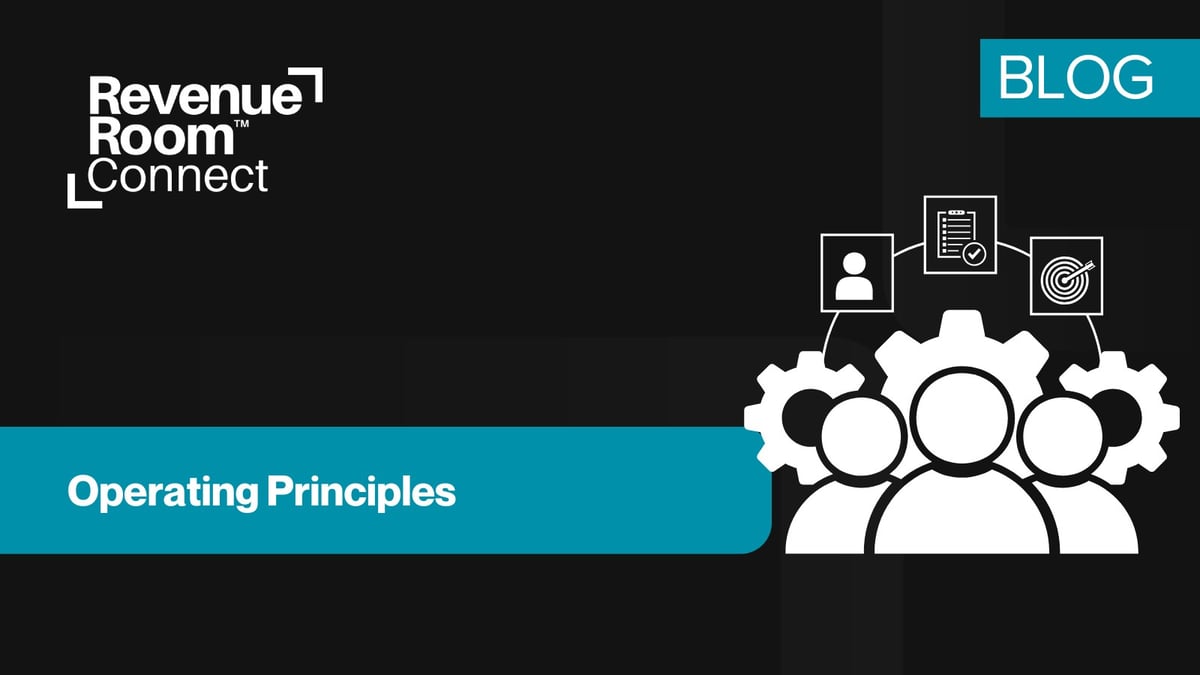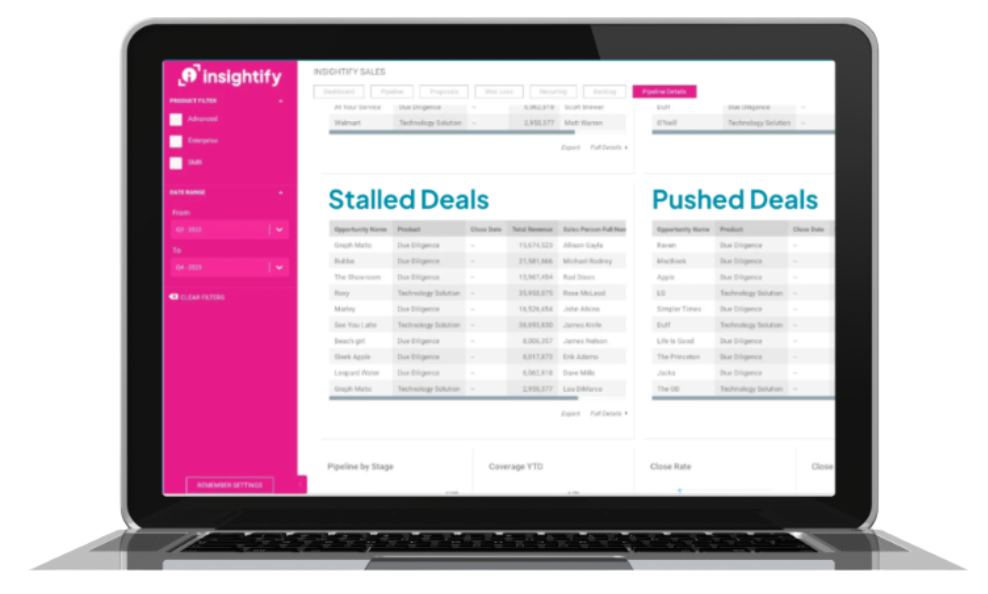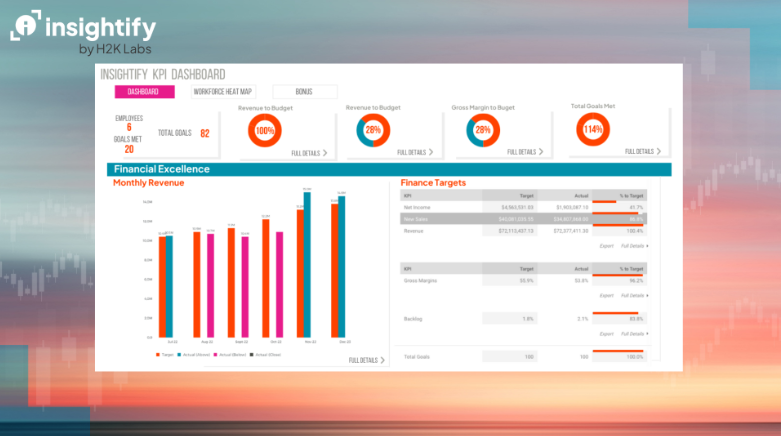In our previous blog, we delved into The Revenue Room™ and Revenue Kaizen, highlighting the immense financial returns of centering revenue as a focal point of excellence in B2B businesses. Now, let's explore why revenue is your most critical business process and the guiding principles of The Revenue Room™ Operating Framework. Revenue: Your Most Critical and Vital Business Process
For many businesses, sales are often seen as an immediate outcome rather than a process that needs careful management. This perspective is particularly prevalent in companies formed through acquisitions, owned by private equity, or that are very decentralized. These companies often suffer from fragmented and siloed sales organizations and processes. This fragmentation leads to challenges in controlling, measuring, scaling, and optimizing revenue goals, resulting in lost revenue, wallet share, and market share. Therefore, transforming these outdated, siloed sales practices into a modern, data-driven center of revenue excellence is crucial.
1. Leadership-Driven Transformation
Transformation starts with leadership. Leaders must define and communicate a clear vision and mission for driving transformation and articulate how it will benefit individuals, teams, and the business. This communication needs to be consistent and ongoing.
“A key foundation for change success lies in data-driven leadership. The report finds that leaders who explain the benefits of data use and lead by example can increase the likelihood of change success by 23 percent and have been shown to increase employees’ willingness to work in a data-driven manner.” - Cap Gemini, Data-Driven Change Management is Crucial for Successful Transformation, January 2023 2. Data-Driven Decisions
The journey must be fueled by data. Utilizing a single source of revenue truth coupled with advanced business intelligence enables the activation of analytics, predictive insights, risk and opportunity identification, and embedding data-driven decision-making into daily workflows.
3. Defining Success: Transparent Metrics & KPIs
Smart KPIs are critical to data transformation for a few compelling reasons: focused direction, improved decision-making, enhanced accountability, performance tracking, improved employee engagement and alignment, continuous improvement and risk management. Establish clear, transparent, measurable objectives and performance metrics to evaluate the success of revenue initiatives. This helps in tracking progress and making necessary adjustments.
4. Effective Revenue Governance
It’s essential to exercise control over all customer-facing, revenue-generating activities. This includes establishing clear metrics, definitions, functional accountability and responsibility, and processes.
Revenue governance in a business context refers to the policies, procedures, and standards to manage and oversee all aspects of revenue generation, recognition, and reporting within an organization. It is a comprehensive approach that ensures accuracy, consistency, and compliance in revenue-related processes.
Revenue governance includes: revenue recognition, pricing and discounting, sales and contract management, internal controls and audits, pipeline management, GTM motions, data management and reporting standards, risk management, cross-functional collaboration, technology and systems, compliance and regulatory requirements, technology and systems, training and development and performance monitoring.
5. Collaboration Across Functions
Align every revenue-critical employee across various departments such as sales, marketing, finance, customer success, product, and operations. This ensures a unified focus on goals and collaborative efforts in opportunity identification, acquisition, retention, and expansion.
In B2B information environments, collaboration cuts across sales marketing, audience marketing, sales, customer success, content, operations and finance.
Yes, even content and operations need to connect to revenue directly.
6. Embracing Evolutionary Transformation
Transformation is not instantaneous; it's an evolutionary process that unfolds over time. It requires continuous learning, experimentation, risk-taking, and a collaborative team spirit. And again, this must start from the top and permeate every facet of the revenue organization.
7. Forecasting as a Core Competency
Covid proved that Mike Tyson was right when he said, “Everyone has a plan until they get punched in the mouth.”
Customer behaviors and demands are in a constant state of flux, rendering prior assumptions inadequate for future predictions. To adapt to these changes, forecasting must become a fundamental skill, placing significant emphasis on analyzing data from diverse and even unconventional sources. This analysis not only allows us to discern the intentions of our customers but also to anticipate shifts in their demographics and how we can deliver value to them.
Predictive and prescriptive forecasting should be a core competency across all areas, including sales, revenue lifecycle, and operational performance. Forecasting should be in lockstep with pipeline motions.
Sales at risk of not hitting quota
8. Customer-Centricity
Customer-centricity is a common theme among market leaders and includes keeping the customer at the center of all revenue initiatives. This involves understanding their needs, pain points, and buying behaviors.
Impact on revenue includes:
- Personalized marketing and sales
- Enhanced customer experience and service
- Data-driven product development
- Predictive analytics for upselling and cross-selling
- Optimizing pricing strategies
- Real-time feedback and agile response
9. Transparency and Accountability
Maintain transparency in revenue performance throughout the organization. This should include metrics that reflect actual performance and the impact of transformational changes. Reporting, analytics, and data visualization should be made available through governed business intelligence dashboards to all.
Insightify
10. Focusing on People
Recognize the need for upskilling or reskilling in certain roles and skills, while others may require new talent acquisition. Training and upskilling, especially in the area of data fluency, needs to be uniform within the context of functional roles as well as from a business-wide perspective.
About the Author
Heather Holst-Knudsen is a distinguished figure and expert in the events, media, marketing and technology sectors. Using her extensive experience, she guides clients in adapting to structural economic and market changes, seizing the chance to innovate and evolve. She specializes in digital and data disruption and opportunity, exploring how these overarching factors can impact revenue growth, customer-centricity, operational efficiency, profit margins, and the overall valuation of companies in both public and private markets. Her journey began at her family business, Thomas Publishing Company, where she honed her skills. She further expanded her expertise by holding positions at early industry giants Miller Freeman, Reed Elsevier, and IDG. Returning to Thomas Publishing, Heather founded and spearheaded Manufacturing Enterprise Communications, an integrated media portfolio connecting buyers and sellers in the manufacturing and technology sectors. Starting in 2015 and spanning the next seven years, she leveraged her expertise as a revenue and business leader in various SaaS businesses, including Feathr, Gleanin, Brella and Edflex.
Heather is deeply passionate about digital innovation, data monetization, and AI and how these strategies fuel revenue growth, profitability, and company valuation. To serve and create value for clients in these areas, she launched H2K Labs, dedicated to generating and leveraging value through data for media, business information, events, and adjacent technology and service markets. 






